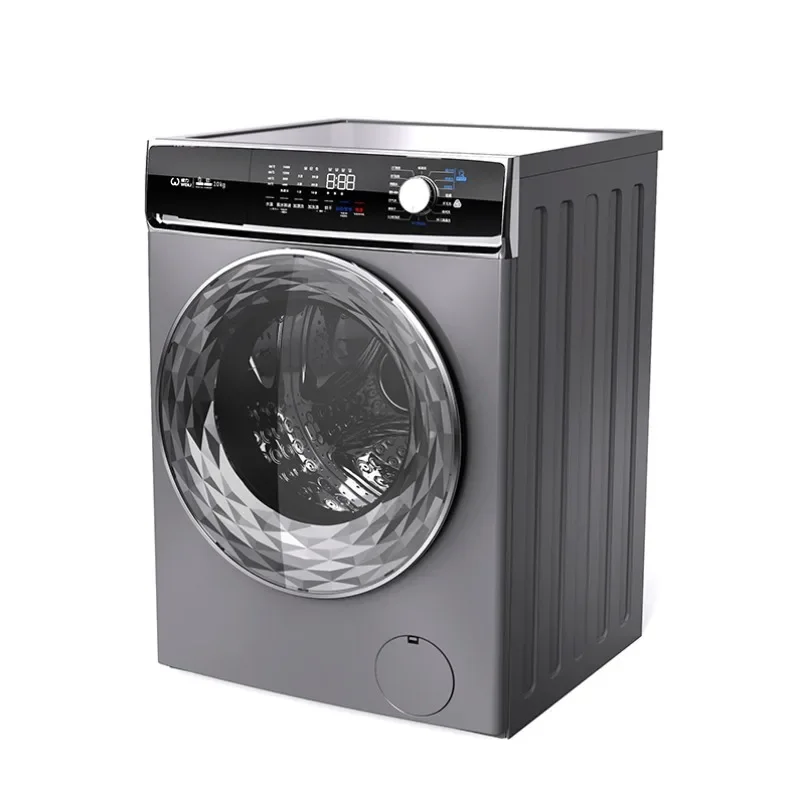How to Remove Brown Flakes In Washing Machine?
Introduction to Brown Flakes in Washing Machines
Encountering brown flakes in a washing machine during laundry is frustrating and unsightly. These flakes can stick to clothes, making re-washing a necessity. The culprit behind this messy situation is often a substance called soap scum. Soap scum can accumulate inside the washing machine drum for various reasons. One major cause is the use of excess detergent or fabric softeners. Not every machine user knows about these flakes or their source. Many continue their laundry routine unaware of the risk lurking within their washer. This blog will shine a light on the dark reality of soap scum. We’ll delve into its causes and explore the best ways to remove it. Understanding what you’re up against is the first step toward a cleaner, scrum-free washing machine and spotless laundry.

Identifying Soap Scrum as a Culprit
Soap scrum is the enemy of clean laundry. It’s that nasty gunk that sticks to fabrics. This culprit is not just dirt. It’s a mix of minerals, detergent, and softeners. Soap scrum clings to the drum and your clothes too. It’s a common issue many don’t even realize they have. Think of brown flakes in your machine. Those are signs of soap scrum build-up. Soap scrum makes you re-wash, wasting your time and water. It happens when you use too much detergent or softener. Hot water dissolves soap better than cold. But cold water can make scrum cling on even tighter. You see the problem after washing – brown patches that just won’t go. That’s soap scrum for you, a laundry nightmare.
To tackle it, know how to spot it first. Watch out for those brown flakes in the washing machine. They’re the tell-tale sign. They aren’t dirt or a machine fault. It’s a lot like a plaque, but for your washer. So cut back on detergent use and consider doing occasional hot washes. Learn from what happened with Rachael Gavin’s story. She faced an uphill battle with these pesky particles. Check your machine if you spot brown specks on clean clothes. It could mean soap scrum is lurking within. Recognizing the problem is the key to a clean machine. Turn your laundry woes into victories. Beat those brown flakes. Make soap scrum a thing of the past.
The Role of Water Temperature in Soap Scrum Buildup
Choosing the right water temperature is crucial in preventing soap scrum. When you use cold water, soap scum forms more easily. The cold does not dissolve detergent like hot water does. Remember, hot water can break down detergent much better.
Rachael Gavin’s experience will speak volumes here. She always washed with cold water. Her sheets and towels often came out with brown patches, a clear sign of soap scrum. It did not end until she switched to hot water cleans. Hot water helped clear out the soap residue.
So, the message is clear. Cold water could be the reason you see brown flakes in your washing machine. For a real clean, throw in a hot water wash now and then. This does not only help clear out the soap scrum. It also keeps your machine in tip-top shape. Add hot water cycles to your laundry routine. Ensure you’re not helping soap scrum stick around.
In summary, to prevent brown flakes in your washing machine, use hot water when needed. It can reduce soap scrum buildup and save you from extra washes and frustration.
Effective Cleaning Solutions for Removing Soap Scrum
To tackle stubborn soap scrum, a thorough clean is necessary. Here are effective methods to banish these irritants.
Using Bi-Carb Soda and Vinegar
Bi-carb soda and vinegar are household staples that can combat soap scrum. Their cleaning power can be impressive. Start by running your washing machine empty, using hot water. Add a cup of bi-carb soda into the drum. Follow this with a cup of vinegar. The chemical reaction helps break down the scum. This natural mixture also deodorizes the machine. It’s a simple and eco-friendly way to maintain a clean washer.
Remember to space out the addition of these substances. Pouring vinegar directly onto bi-carb soda can cause excessive fizzing. Instead, add the bi-carb soda at the beginning and the vinegar during the rinse cycle. Run a complete wash cycle for the best results.
Trying Citric Acid for a Deeper Clean
For a more rigorous approach, citric acid may be your best bet. Often found in supermarkets, this powerful agent removes even the toughest stains. Similar to the previous method, run your machine empty with hot water. Dissolve two 75g packets of citric acid in a little hot water. Pour this solution into your machine. Run the longest, hottest cycle available. Citric acid not only clears out soap scrum but also prevents future build-up. It can also tackle mineral deposits, keeping your machine running smoothly.
After using citric acid, run an additional cycle with just hot water. This rinse will remove any remaining cleaning agents. It leaves your washing machine fresh and clean.
 Preventative Measures: Regular Maintenance and Hot Water Cycles
Preventative Measures: Regular Maintenance and Hot Water Cycles
Preventing soap scum starts with routine care. Regular maintenance stops brown flakes in your washing machine before they form. Running hot water cycles helps dissolve detergent, which cold water cannot do as well. Here’s how to keep your machine at its best:
- Clean Monthly: Run a maintenance wash once a month. Use hot water and a cleaning agent.
- Hot Water Washes: Do laundry with hot water periodically, especially for linens and sturdy fabrics.
- Less Detergent: Use less detergent than you think you need to prevent soap buildup.
- Fabric Softener Caution: Limit use of fabric softeners. These can add to scum.
Pairing regular cleanings with smart laundry habits keeps flakes away. Your washing machine needs care, just like any other appliance. Check the manual for specific instructions for your model. Some machines have self-clean cycles designed to tackle soap scum. Also, clean filters and check for trapped lint regularly.
Keep a balance between cold and hot water washes. Use cold for delicate items and hot for tough dirt or oil stains. Aim for at least a warm wash every few cycles to manage scum buildup.
These steps not only fight off brown flakes but also prolong the life of your machine. Remember, good maintenance habits make for better laundry days.
Recognizing the Importance of Following the Manufacturer’s Manual
Understanding the manufacturer’s manual is crucial for maintaining your washing machine. Often, users overlook this essential guide. However, it holds the key to preventing the buildup of brown flakes in the washing machine. Manuals provide specific care instructions tailored to your model. They suggest the best practices for cleaning cycles and detergent use. Some even warn against the overuse of cold water, as experienced by Rachael Gavin. Ignoring this advice can lead to soap scum issues.
To keep your machine in excellent condition, heed the manual’s guidance. Here are simple, actionable points drawn directly from this wisdom:
- Warm Washes: Integrate warm or hot water washes as recommended by the manufacturer to avoid residue.
- Correct Detergent: Use the type and amount of detergent prescribed to prevent excess buildup.
- Routine Cleaning: Follow the advised schedule for cleaning cycles to maintain machine hygiene.
- Use Specific Features: Some models come with anti-scum settings or specific cleaning programs.
In short, familiarize yourself with the manual. It’s a valuable resource that offers personalized solutions for your washing needs. Acting on it means fewer soap scum battles. Plus, you can enjoy cleaner clothes and a more efficient appliance. Regular reference to the guide ensures a longer lifespan for your machine and more effective laundry sessions. Keep your manual handy and consult it for the best care and use of your washing machine.
 Final Tips: How to Keep Your Washing Machine Scrum-Free
Final Tips: How to Keep Your Washing Machine Scrum-Free
Congratulations on reaching the final stretch in your battle against pesky brown flakes in your washing machine. Now that you’ve learned about the causes, and how to effectively remove soap scrum, it’s time to talk about ongoing prevention. Keeping your machine scrum-free is all about adopting a few good habits. Here’s how you can do it:
- Run Regular Maintenance Washes: Allocate one day each month for a maintenance wash. Use your machine’s highest temperature setting and a recommended cleaning agent. This helps prevent buildup of unwanted residue.
- Balanced Water Temperature: Try not to use cold water for all your washes. Throwing in a hot water cycle now and then breaks down detergent more effectively. Aim for hot water washes, especially after several cold cycles.
- Measure Detergent: More soap does not mean cleaner clothes. Use just enough detergent to avoid excess that turns into scum. Check the bottle’s label for the right amount.
- Limit Fabric Softener: If you can, avoid using fabric softener or use it sparingly. It contributes to scum buildup. Consider using vinegar as a natural fabric softener alternative.
- Stay Informed: Read your washing machine’s manual. It has important information about care and optimal use. Following the manufacturer’s advice can keep scrum at bay.
- Visual Checks: Keep an eye on your machine. Look for signs of scum after each wash. Quick action can stop a small problem from becoming bigger.
- Clean Filters Regularly: Don’t forget the filters. Lint and other debris can contribute to soap scum. Clean them out routinely to keep your drum clear.
- Dry the Drum: After a wash, leave the door open to air dry the drum. A dry environment discourages scum formation.
By taking these steps, you’ll ensure that your washing machine stays in its best shape for years to come. Embrace these tips and enjoy scrum-free laundry, every time!

